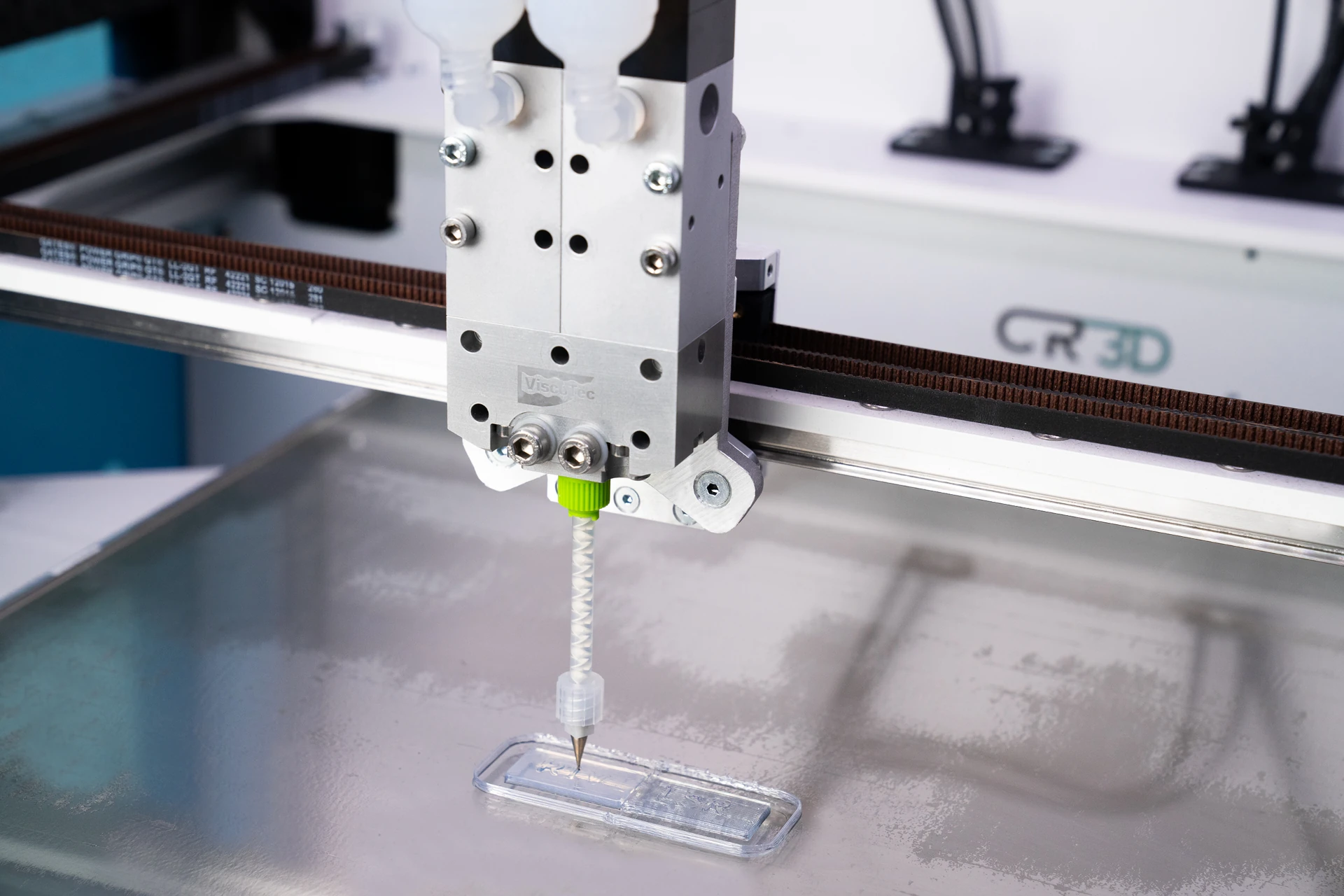Additive Manufacturing with Silicone: Multi-Material Components
Combining different silicones in one additive manufacturing process
Introduction
Extrusion-based additive manufacturing using silicones is progressing and advancing at a tremendous rate. An interesting new approach is to combine different materials in order to produce different component properties.
The technical challenge of this is integrating several printheads into the additive manufacturing technology, which can be done in different ways.
For example, it is possible to implement several printheads through simultaneous processing on an axis or through use of a tool change system. This article takes a detailed look at a third variant called the Individual Dual Extruder design (IDEX) and shows the various approaches for multi-material printing.
Printing process and result
In this IDEX process, one of the two printheads is always active. The passive one remains in its parking position at the edge of the printing area. The active suck-back of the vipro-HEAD is an advantage here as it prevents unwanted dripping of the material. Before the start of the manufacturing process, the two dosing needles must be aligned to one another (X-, Y- and Z-offsets). If static mixers made from plastic are used, the offsets generally change after each mixer change. In this case, it is recommended to realize the offsets so that they can be determined automatically, in order to make the process more efficient.
Once the process configuration is finished, the component manufacturing begins. The preview of the file after the “slicing” process (converting a 3D model into layers and travel paths) is illustrated in Figure 1. The example illustrated here shows the manufacturing of a simple sheet geometry with lettering. One half contains an LSR (liquid silicone rubber) and the other consisting of a RTV (room-temperature-vulcanizing). Figure 2 illustrates the printing process and shows the active vipro-HEAD that is currently applying the RTV.
The complete manufacturing process can also be seen in this video. Using the combined printing process presented, a component made from two different silicones with different properties is manufactured. The different materials are merely printed parallel next to one another, but not interwoven. In terms of the mechanical loads (torsion and elongation), the video shows the excellent adhesive bond between the different materials and their different stretching behavior. The video clearly shows that the RTV can be deformed more strongly than the LSR.
Conclusion and outlook
The example proves that the use of different silicones with different shore hardness changes the mechanical properties of a component. It thus confirms that the combination of two silicones is possible and enables the production of new material compounds created through additive manufacturing.
The combination of different materials opens the door to new potential applications:
- Different colors can be combined in a single component.
- The combination of conductive and insulating materials enables new approaches for the manufacturing of electronic components.
- Additional support material can be used in a further printhead, in order to build up support structures. This also enables the manufacturing of components with more complex geometries (e.g., overhangs).
The combination of two or more materials through vipro-HEADs expand the spectrum of products that can be produced through additive manufacturing and ensures value creation: geometric and mechanical tasks can be solved in a single component.

